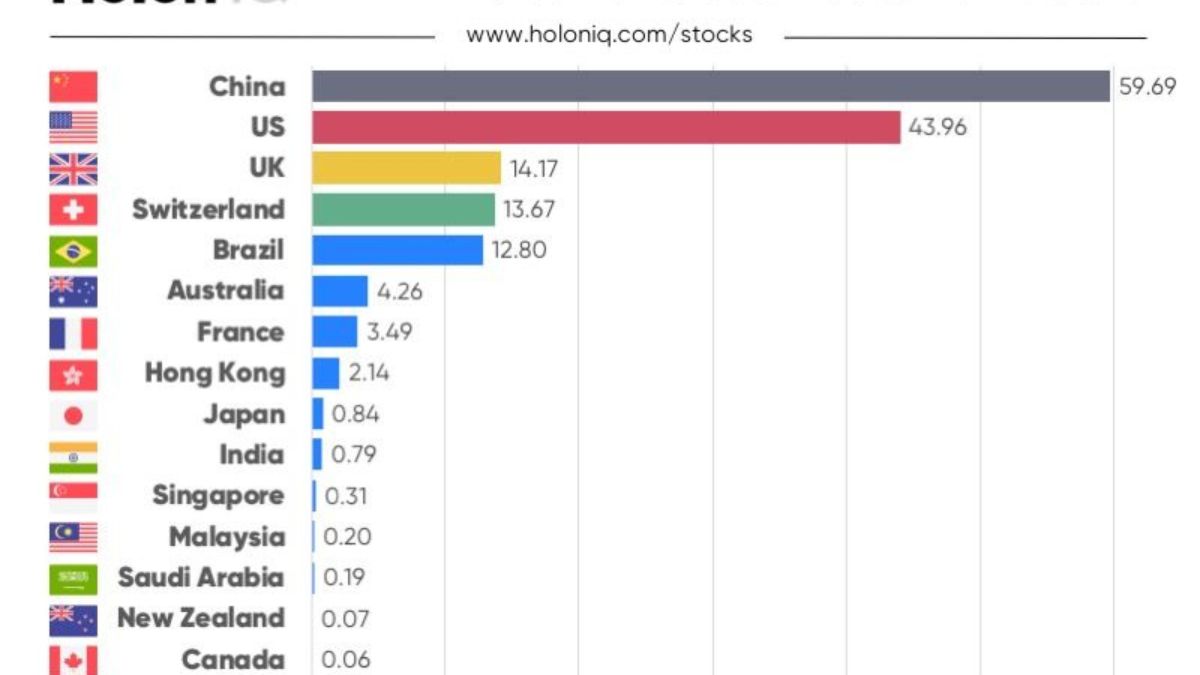Education plays a pivotal role in shaping both individual and collective futures. It impacts everything from personal earning potential to a state’s economic development and general quality of life. But not all school systems are created equal. Regions vary widely in the quality of their education systems due to factors like funding, teacher qualifications, class sizes, and public policy. This has led to significant disparities between states, which are reflected in national rankings.
If you’ve wondered how your state stacks up or you’re considering a move and education is a priority, this post breaks down how states are ranked in terms of education, the key metrics that influence their standings, and which states are leading or lagging in 2024.
How Are Education Rankings Determined?
Before we explore the rankings, it’s important to understand what goes into evaluating education systems. Analysts use several important metrics to determine state rankings, including:
1. Academic Performance
Academic outcomes are a critical factor. This includes standardized test scores in math, reading, and science. High graduation rates and the percentage of students meeting proficiency benchmarks are key indicators of a state’s academic performance.
2. Funding and Resources
States that invest more in their schools often see better outcomes. Funding per student is a major metric, as it reflects the resources for teacher salaries, classroom supplies, and facilities. Schools with limited resources struggle to deliver high-quality education, particularly in underprivileged areas.
3. Student-Teacher Ratios
Class size is another critical factor. Smaller student-to-teacher ratios mean students receive more personalized attention, which can improve learning outcomes, especially for younger students or those needing additional support.
4. College Readiness
How prepared are high school graduates for college? Metrics such as SAT and ACT scores, participation rates in advanced placement (AP) courses, and college enrollment statistics play a significant role in determining this readiness.
5. Safety and Student Wellbeing
For schools to be places of learning, they need to provide a safe environment. States are evaluated based on reports of bullying, violence, and mental health support for students.
6. Equity
Equity in education measures how states address inequalities in access to quality education for underserved communities, including low-income families and minority populations.
7. Graduation Rates and Dropout Rates
High school graduation rates are an important metric. Conversely, states with high dropout rates tend to rank lower, as this reflects systemic issues like disengagement and lack of support.
8. Early Childhood Education
Access and participation in programs like preschool are included in the rankings. Quality early learning is a strong predictor of long-term academic success.
Now that we understand how these rankings are calculated, let’s take a closer look at which states excel and which struggle.
The Top-Performing States for Education in 2024
1. Massachusetts
Massachusetts consistently leads the nation in education rankings. Known for its academic rigor, the state boasts some of the highest standardized test scores and college readiness rates. With strong public investment and a focus on teacher development, Massachusetts sets the bar for educational excellence.
2. Connecticut
Connecticut ranks high thanks to its generous per-student funding and high graduation rates. The state is also recognized for its quality early childhood programs and small class sizes, which contribute to strong academic outcomes.
3. New Jersey
New Jersey continues to shine with impressive college readiness and graduation rates. Its robust support systems and dedicated funding for low-income areas have also improved outcomes for underserved students.
4. Virginia
Virginia excels in college readiness, with a large percentage of high school graduates enrolling in post-secondary institutions. The state’s focus on STEM (science, technology, engineering, and mathematics) education has also been a contributing factor to its high rankings.
5. Maryland
Maryland earns strong marks for its investment in public education, particularly in urban areas like Baltimore. The state emphasizes equity and is making strides in closing achievement gaps between different demographic groups.
States Struggling in Education Rankings
1. New Mexico
New Mexico often ranks at the bottom due to high dropout rates, teacher shortages, and limited per-student funding. While efforts have been made to improve early childhood education, progress has been slow.
2. Alabama
Alabama faces challenges with underfunded schools, low test scores, and high poverty rates. Limited access to educational resources in rural areas further exacerbates these issues.
3. Louisiana
Despite improvements in graduation rates over the years, Louisiana struggles with low proficiency in math and reading. Structural inequalities and a lack of investment remain significant hurdles.
4. Mississippi
Mississippi has shown improvement in its early childhood education programs, but it still ranks low due to poor standardized test scores and a high percentage of students living in poverty.
5. Nevada
Nevada faces a combination of overcrowded classrooms, low teacher retention rates, and budget constraints. These factors contribute to Nevada’s poor performance in academic outcomes and student wellbeing.
What Can States Do to Improve?
Education reform varies state by state, but there are strategies that have proven successful across the board. These include:
- Investing in Teachers: States need to prioritize teacher salaries and professional development to attract and retain high-quality educators.
- Closing the Funding Gap: Ensuring that all districts, regardless of local tax revenue, have access to equitable funding is vital for improving education opportunities in disadvantaged areas.
- Strengthening Early Childhood Education: Boosting enrollment in quality preschool programs helps lay a strong foundation for future academic success.
- Leveraging Technology: Digital tools can address challenges like high student-to-teacher ratios and provide personalized learning experiences.
- Fostering Community Engagement: Encouraging collaboration between schools, parents, and local businesses can create stronger support systems for students.
Why Education Rankings Matter
Why should we care about education rankings? Because they’re more than just numbers. These rankings reflect the opportunities available to the next generation. They influence property values, local economies, and even where families choose to live.
For employers, education rankings provide a snapshot of workforce readiness. States with stronger education systems often produce more skilled and innovative workers, giving them a competitive edge in attracting businesses.
For parents, these rankings spotlight issues that require advocacy. Whether it’s lobbying for better teacher pay or joining school board discussions, parents have the power to push for meaningful changes.
What’s Next for Your State?
Education is evolving, and staying informed is key to ensuring that states invest in their future. Whether you’re a parent, student, teacher, or policymaker, understanding how education is ranked by state can guide decisions and spark necessary dialogue.
If you’re looking to explore deeper insights into how education impacts your state, consider reviewing annual reports from organizations like Education Week or the National Center for Education Statistics (NCES).
FAQs
1. How are states ranked in education?
States are ranked based on various factors such as student achievement, teacher quality, funding distribution, graduation rates, and access to advanced programs. Reports from organizations like Education Week use comprehensive data to evaluate and score these criteria.
2. Why do education rankings matter?
Education rankings highlight disparities and successes within states, helping policymakers and stakeholders identify areas that need improvement. They serve as a benchmark for progress and inspire efforts to provide equitable education opportunities.
3. Where can I find reliable education data for my state?
Trusted sources include the National Center for Education Statistics (NCES), state education department websites, and annual publications like Education Week’s Quality Counts report.
4. What can parents and students do to improve education in their state?
Parents and students can stay informed, participate in school board meetings, advocate for education policies, and support initiatives that promote equal access to quality education.
5. How often are state rankings updated?
Most education rankings are updated annually to reflect the latest available data, trends, and developments in the education sector.











